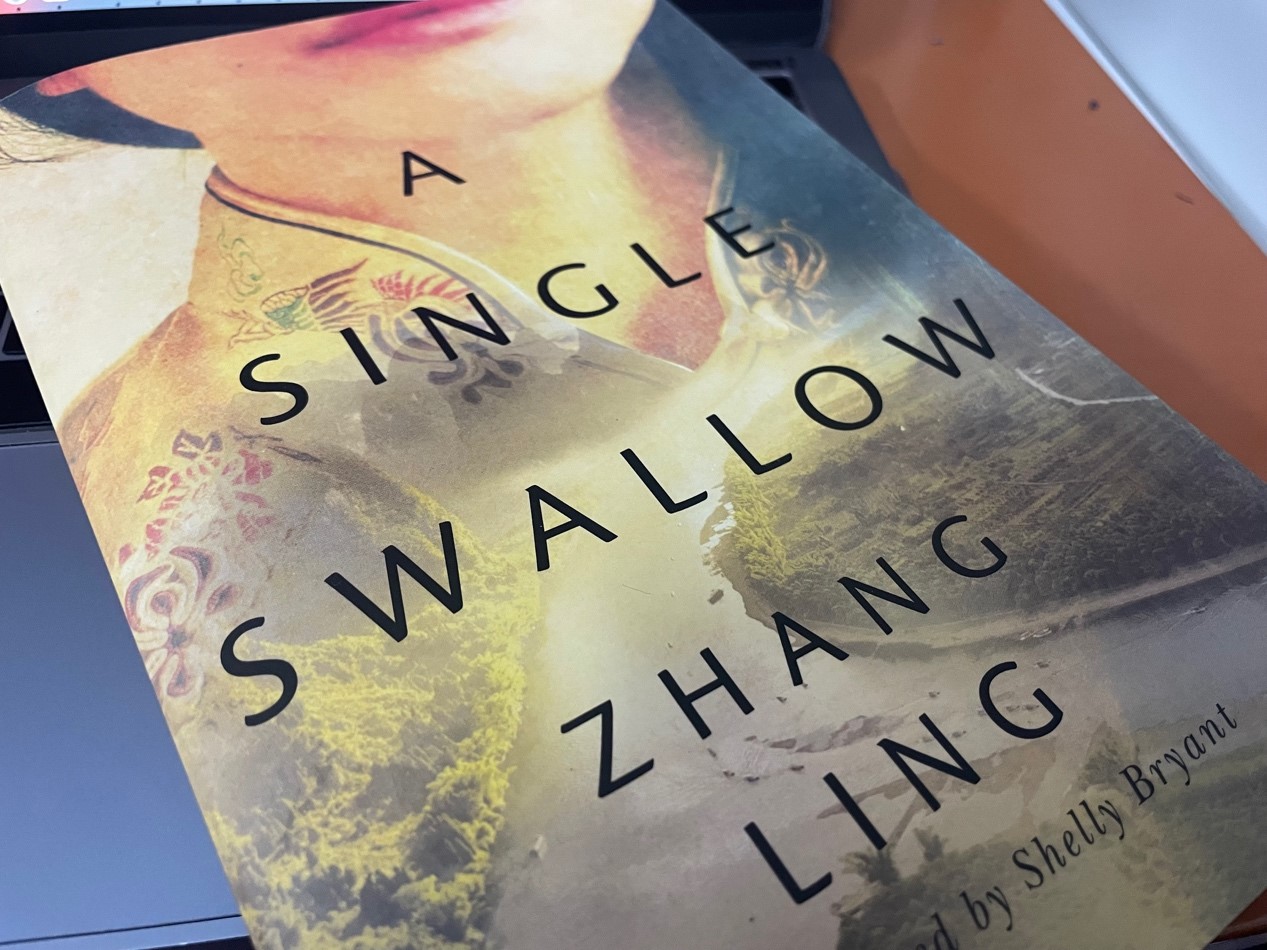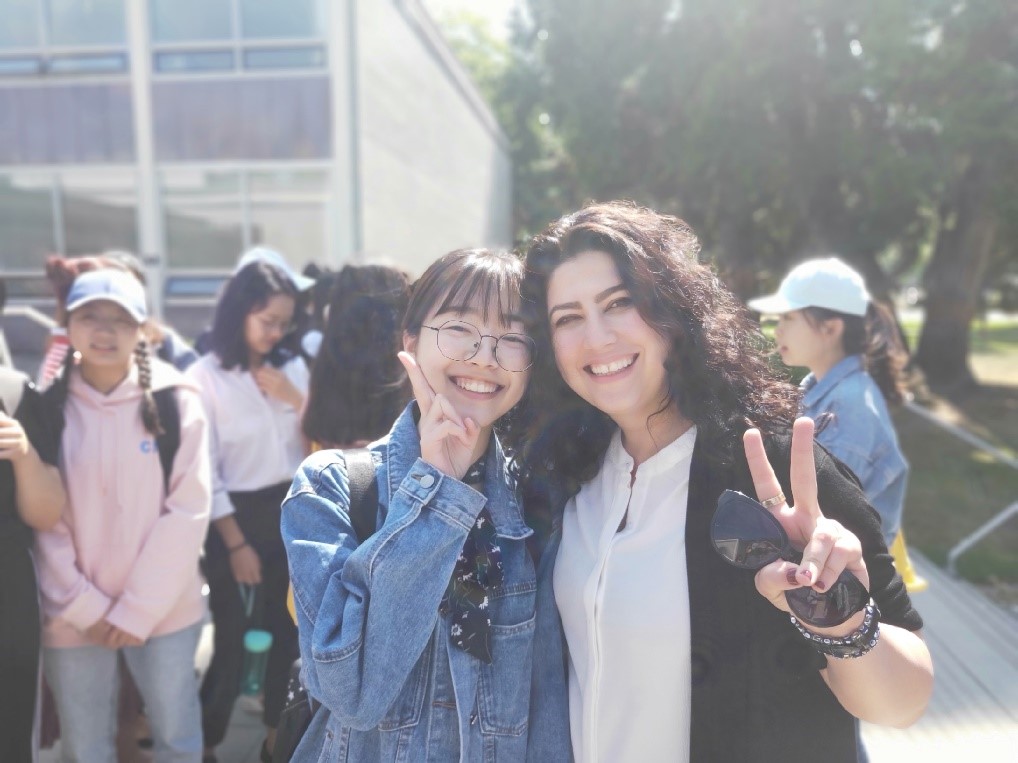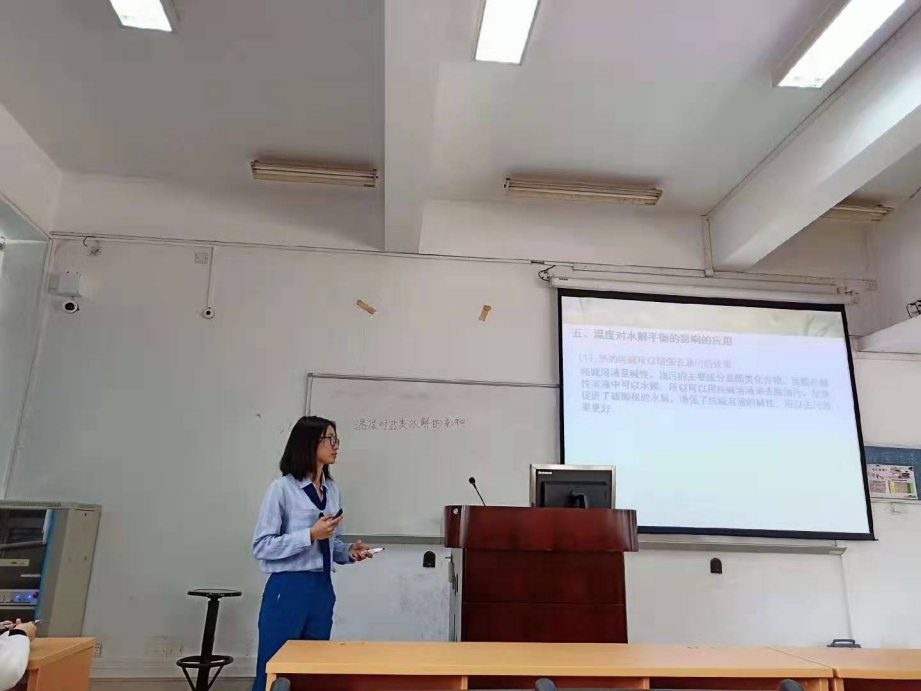
Likes
Editor's Note: The third SCNU English writing contest, themed "Telling China’s Story", ended with 422 entries from 33 different schools. We congratulate all prize winners on their outstanding performance. Awarded winners have been announced (see results), and all winning entries will be published in this column.
-------
By Chen Jiahuan
"I pick fence-side asters at will;
Carefree I see the southern hill.
The mountain air's fresh day and night;
Together birds go home in flight."
This is a beautiful picture of the idyllic life in ancient China depicted by the poet Tao Yuanming, which is the simplest life of human beings and brings the soul back to its essence. For nearly 2,000 years, this romance of the Chinese idyll was inherited but never spread oversea. However, in 2017, things changed.
Chinese vlogger Li Ziqi, who has set a new Guinness World Record for "most subscribers for a Chinese language channel on YouTube" with 14.1 million subscribers, is providing a brand-new window to the world to witness the Chinese culture with an unfiltered lens.
Li's going viral reflects the romanticized and pastoral desires of disillusioned by today's ever-changing, industrial, consumerist society wrapped in globalization. She represents a new wave of Chinese soft power in that she's so creative and aesthetically good with emotional resonance and the similar values whether they're Chinese or not, which also confirms that sentence, "the more national, the more world." As a result, Li has crafted works that resonates culturally and evoke the desire of people around the world for the excellent Chinese traditional culture.
Without doubt, Li's example has been proved a great success of telling Chinese story, from which we learned that we need to adhere to the Chinese story creates profound and enduring cultural resonance.
Although China has been emphasizing the peaceful nature of its rise and has proposed that our fundamental interest is to build a "community of common destiny for mankind" in which all countries and peoples can benefit, we still face the notion of the "China Threat Theory", that "countries that strengthen must seek hegemony", from the West and its proponents. Therefore, telling the Chinese story is not a zero-sum game, nor is it a diplomatic negotiation. We should put down the whiff of what has been called "wolf warrior diplomacy" or zhanlang waijiao, in order to make Chinese storytelling more convincing and persuasive. Both in the story itself and the process of story telling, China has a distinctive voice that can be heard and understood in international discourse.
Cultural resonance comes from sharing. The core of the sharing gene in Chinese culture is derived from the ancient concept of being "people oriented" and from the benevolent philosophy of seeking a commonwealth, a public world and the way of loyalty and forgiveness. This openness is particularly evident in its ability to blend different cultures and transform them in an innovative way, which is a natural consequence of its participation in building an international shared culture.
In recent years many content creators, based on their love of traditional culture, have used Chinese narratives to share traditional culture on foreign video platforms, making it more personal. For example, action challenges based on Shaolin culture have spread overseas, leading to imitation by users in Japan, Korea and Southeast Asia, and giving the world a clearer understanding of China's past and present, proving that we have the ability and strength to "attract" and "appreciate" each other's culture. China is a country that can successfully wield its cultural power.
A country that can successfully wield its international narrative power is one which is good at projecting its voice using its own microphone. In other words, in order to gain the initiative in international communication, we need to actively participate in discussions and share our ideas.
Cultural resonance comes from empathy. The friendship of nations lies in the closeness of people, and the closeness of people lies in the connection of hearts. While cultures are different around the world, human beings share a desire for a better life and a search for humanity. To tell the Chinese story well, we need to explore the basis of empathy, set common topics, and seek consensus with modern ideas of peaceful development, traditional Eastern ideas, and stories of other cultures.
Stories should not only be confined to the Chinese system, but also relate the joys and sorrows of ordinary people. In doing so, we should use innovative methods of communication and narrative concepts, so that we can ensure that what we want to tell can be heard by foreign audiences and enhance the affinity of our communication.
In terms of narrative, literature is the best vehicle. In recent years, the popularity of contemporary Chinese literature abroad has gradually been increasing, but there are still problems of low acceptance and poor distribution channels. It is striking to note that, since its launch on Amazon in 2020, contemporary author Zhang Ling's A Single Swallow has ranked first in the overall search results for "Chinese novel". In the post-epidemic era, it has achieved a good overseas distribution effect.
Zhang Ling's novel A Single Swallow is set against the backdrop of China's war against Japan. Through the portrayal of the female protagonist "Ah Yan" and the narration of three male protagonists of different nationalities (representing different ethnic cultures), it conveys to readers at home and abroad a profound connotation: the glory and darkness of human nature are highlighted under the war, and the exchanges and frictions between Eastern and Western cultures are thought-provoking.
The exchange and friction between Eastern and Western cultures is thought-provoking, reflecting the desire for equal dialogue between cultures and the endless pursuit of peace and love. It is this kind of story that has delighted foreign readers and made them fall in love with it, receiving overwhelmingly positive reviews and becoming a phenomenal bestseller.

A Single Swallow written by Zhang Ling.
Cultural resonance also comes from a common desire. Telling the Chinese story is not at all about personal aspirations, but rather about the "Chinese dream" of the "great rejuvenation of the Chinese people". It has resonance for other countries, because it is also a dream of peace, development, cooperation, and win-win. The logic here, at the heart of China's foreign policy thinking around such phrases as "community of common destiny for mankind", is that China's ascendance enmeshes it more deeply with the world in ways that benefit all.
For example, at the time when the epidemic was raging, in the course of China's struggle against the epidemic, the Chinese people were not afraid of sacrifice and hardship, and a large number of sobering personalities emerged, embodying in them the national spirit of sacrificing life, death, and dedication. The international community is highly concerned about the development of the epidemic, but at the same time some foreign media are deliberately smearing China, inciting some uninformed people to slander China and damaging the image of the Chinese people.
Therefore, we must take the initiative to respond to international concerns and let more people around the world know the truth about the Chinese people's fight against the epidemic in a timely manner. By promoting the fearlessness of the Chinese people and the Chinese nation to fight and win, as well as the great spirit of fighting the epidemic in which life comes first and science is respected, the confidence and determination of people around the world to fight the epidemic is increased.
China has embraced the world since the launch of reform and opening-up in 1978, and we need more than ever to better convey China's story and make China's voice heard so that more people can understand China. This process is still ongoing, so crafting Cultural Resonance is a must for drafting the Chinese Story. It is also the most important direction in which we are now working.
What to read next:










